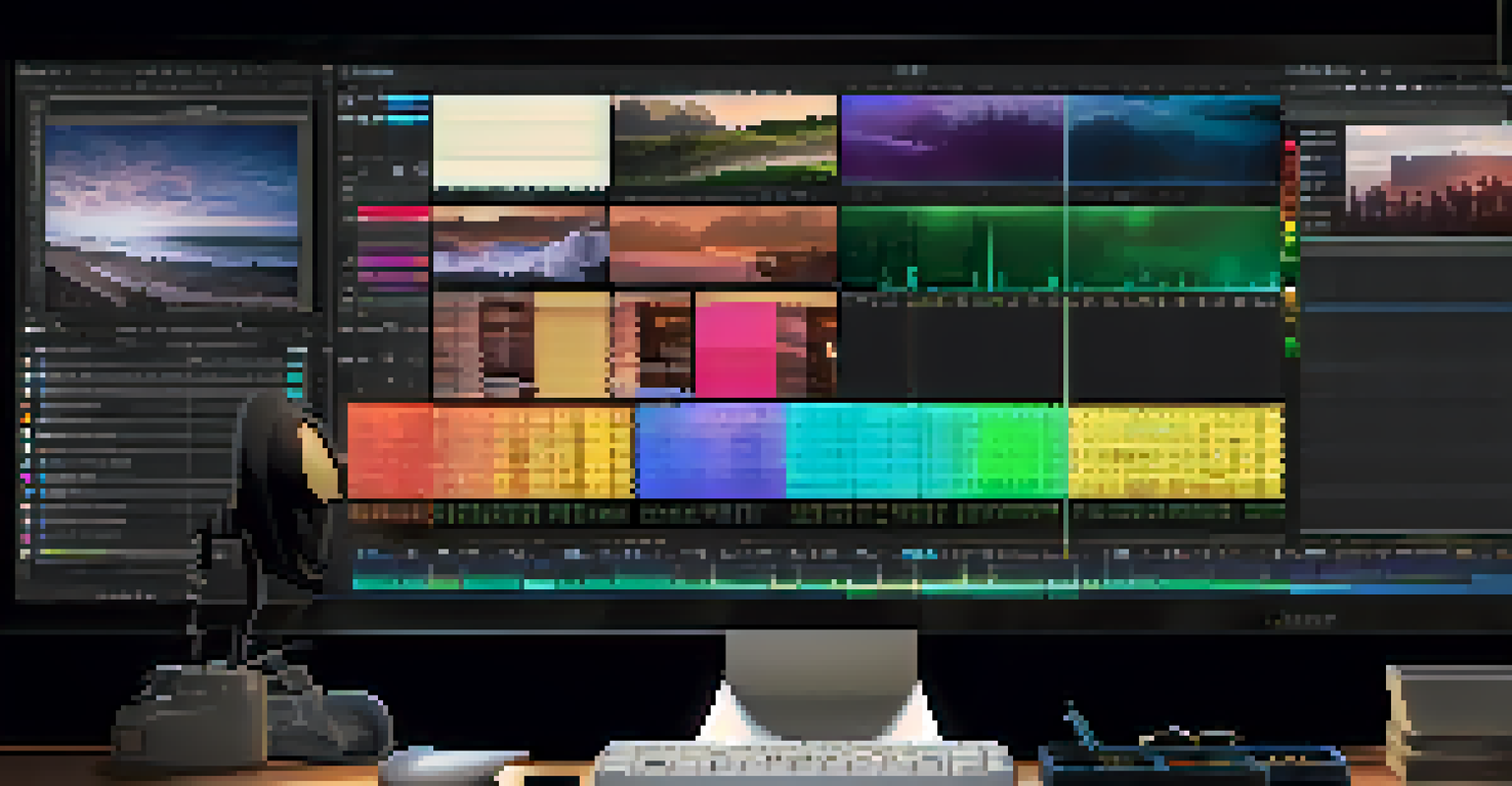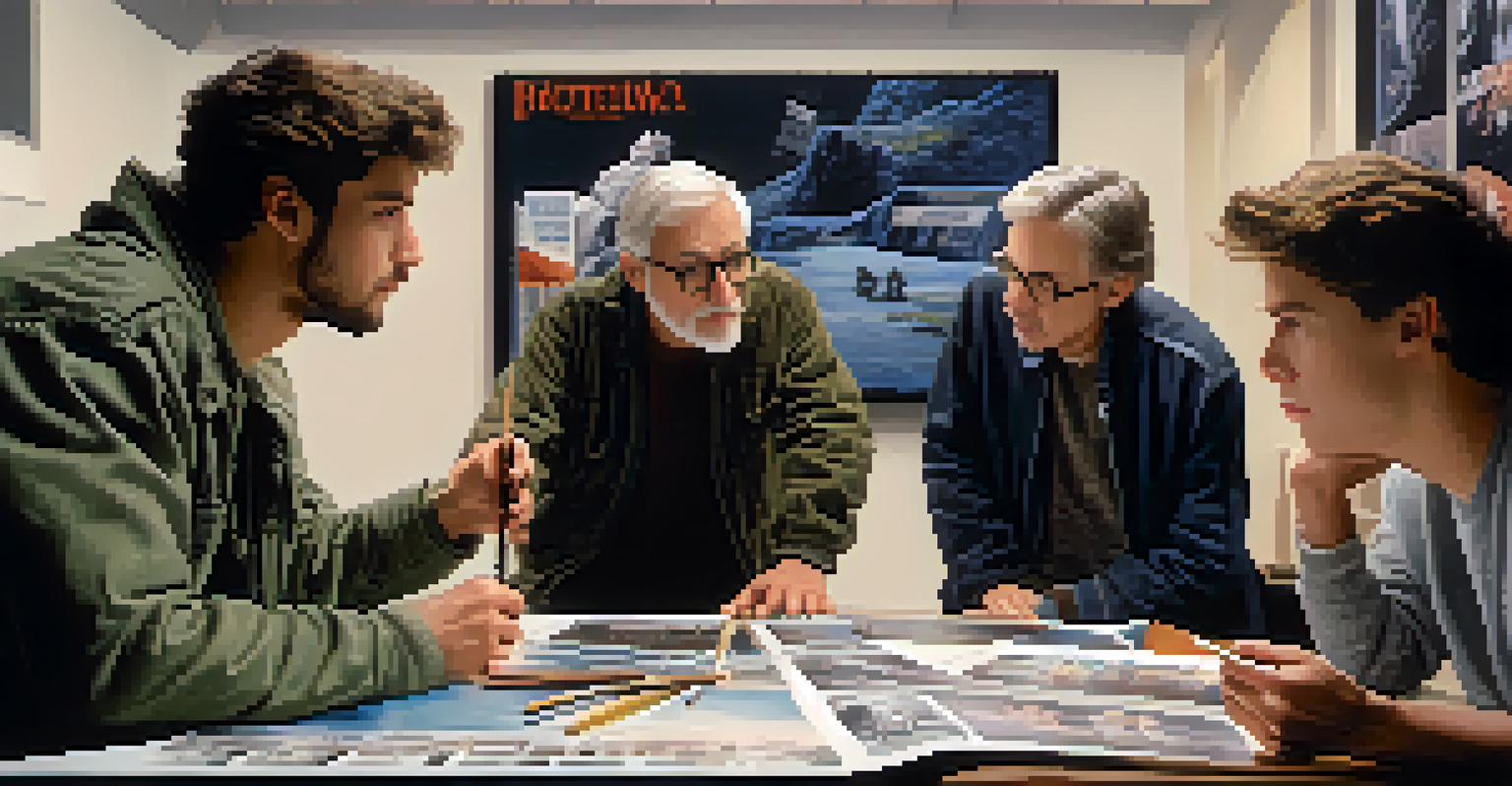Key Responsibilities of Film Editors in Post-Production

Crafting the Narrative: The Editor's Storytelling Role
Film editors are crucial in shaping the narrative of a film. They take raw footage and assemble it into a coherent story, ensuring that the plot flows smoothly and engages the audience. This process often involves making tough decisions about which scenes to keep, which to cut, and how to rearrange them for maximum impact.
Editing is the process of taking out what you don’t need, making the story clearer and simpler.
A good editor understands the emotional beats of a story and uses pacing and rhythm to enhance these moments. For instance, they might stretch a particular scene to build tension or cut it short to deliver a punchline effectively. Their choices can dramatically change how viewers perceive a character or storyline.
Ultimately, the editor's storytelling role is about more than just piecing together clips; it’s about creating an experience that resonates with the audience long after the credits roll.
Syncing Sound: The Editor's Role in Audio Integration
In addition to visual storytelling, film editors are responsible for integrating sound into the film. This includes dialogue, sound effects, and music, all of which play a vital role in setting the tone and atmosphere. Editors carefully sync these audio elements with the visual components to ensure a seamless viewing experience.

For example, if a character is reacting to a shocking event, the sound of their gasp must align perfectly with the visual cue to maximize its impact. Editors often collaborate closely with sound designers and composers to achieve this synchronization and enhance the overall quality of the film.
Editors Shape Film Narratives
Film editors are essential in crafting a compelling story by selecting and arranging footage to enhance emotional impact and viewer engagement.
By skillfully blending audio and visuals, editors help create a richer narrative that immerses the audience in the film's world.
Maintaining Continuity: Ensuring Visual Consistency
Continuity is key in film editing, as it ensures that the story remains coherent and believable. Editors must pay close attention to details, such as the placement of props, costumes, and lighting, to maintain a consistent visual narrative throughout the film. Any discrepancies can pull viewers out of the story and disrupt their engagement.
The best editing is the editing you don’t notice.
For instance, if a character is holding a cup in one shot and it changes position in the next without explanation, it can confuse the audience. Editors often use continuity notes taken during filming to help spot and correct these issues, making their role crucial in the editing process.
By diligently maintaining continuity, film editors preserve the film's integrity and help the audience remain immersed in the story.
Color Grading: Enhancing Visual Aesthetics
Color grading is another essential responsibility of film editors, as it significantly impacts the visual aesthetics of a film. This process involves adjusting the colors, contrast, and brightness in each scene to create a specific mood or tone. For example, a romantic scene might be softened with warmer tones, while a thriller could utilize cooler, darker shades.
Editors use specialized software to enhance the visual storytelling through color grading, ensuring that each frame aligns with the film's overall theme. This not only improves the film's appearance but also reinforces the emotional undertones of the narrative.
Sound Integration is Key
Editors play a crucial role in synchronizing sound elements with visuals, creating an immersive experience that enhances the film's atmosphere.
Ultimately, effective color grading can elevate a film from ordinary to extraordinary, giving it a polished and professional look.
Creating Transitions: The Art of Seamless Cuts
Transitions play a vital role in film editing, guiding viewers from one scene to another without jarring interruptions. Editors use various techniques, such as cuts, fades, and dissolves, to create smooth transitions that maintain the film's flow. Choosing the right transition can enhance the emotional impact of a scene and keep the audience engaged.
For example, a sudden cut from a joyful celebration to a somber moment can heighten the emotional contrast, while a slow fade can evoke a sense of nostalgia. Editors must be intuitive and creative in their approach to transitions, understanding how each choice affects the viewer's experience.
By mastering the art of seamless cuts, film editors contribute to a cohesive storytelling experience that captivates the audience.
Collaboration with Directors: A Team Effort
Film editing is rarely a solitary endeavor; it often involves close collaboration with directors and other key creative team members. Editors must communicate effectively to understand the director's vision and ensure that it is realized in the final cut. This collaborative process can involve multiple rounds of feedback and revisions, as everyone works towards a shared goal.
For instance, a director might have specific scenes they feel strongly about, while the editor may suggest alternative cuts that enhance the narrative. Finding a balance between the director's vision and the editor's expertise is essential for creating a successful film.
Collaboration Ensures Success
The editing process thrives on collaboration between editors and directors, balancing creative visions to produce a cohesive and polished final product.
Ultimately, this teamwork fosters an environment where creativity flourishes, leading to a polished and cohesive final product.
Finalizing the Cut: The Importance of Quality Control
Once the editing process is nearing completion, film editors focus on quality control to ensure the final cut meets industry standards. This includes checking for technical issues, such as audio levels, visual artifacts, and overall pacing. Editors meticulously review the film to catch any errors that could detract from the viewer's experience.
At this stage, it's also common for editors to create multiple versions of the film, catering to different audiences or distribution formats. This flexibility allows the film to reach a wider audience and can be crucial for its success.

By prioritizing quality control, film editors play a pivotal role in delivering a polished final product that reflects the hard work of the entire team.